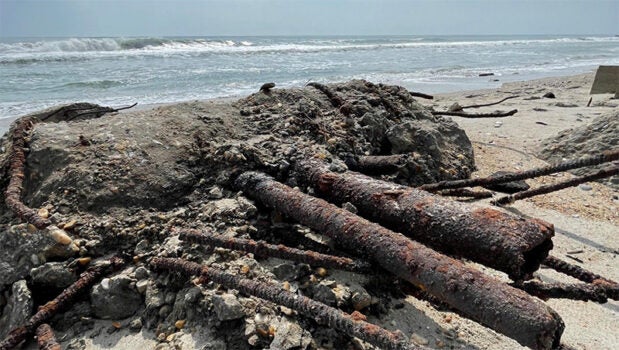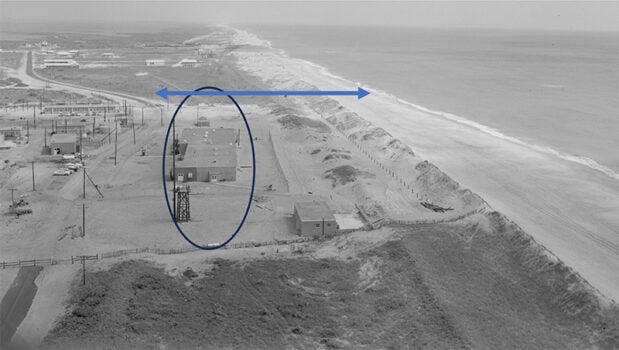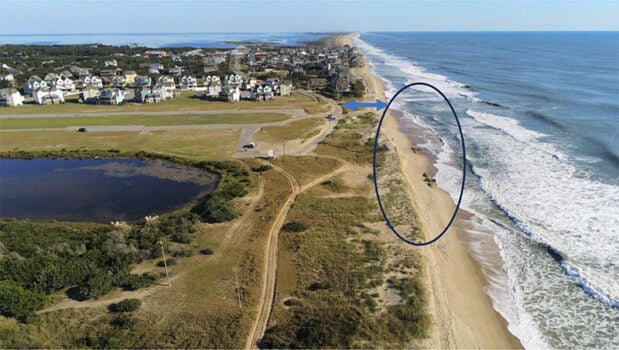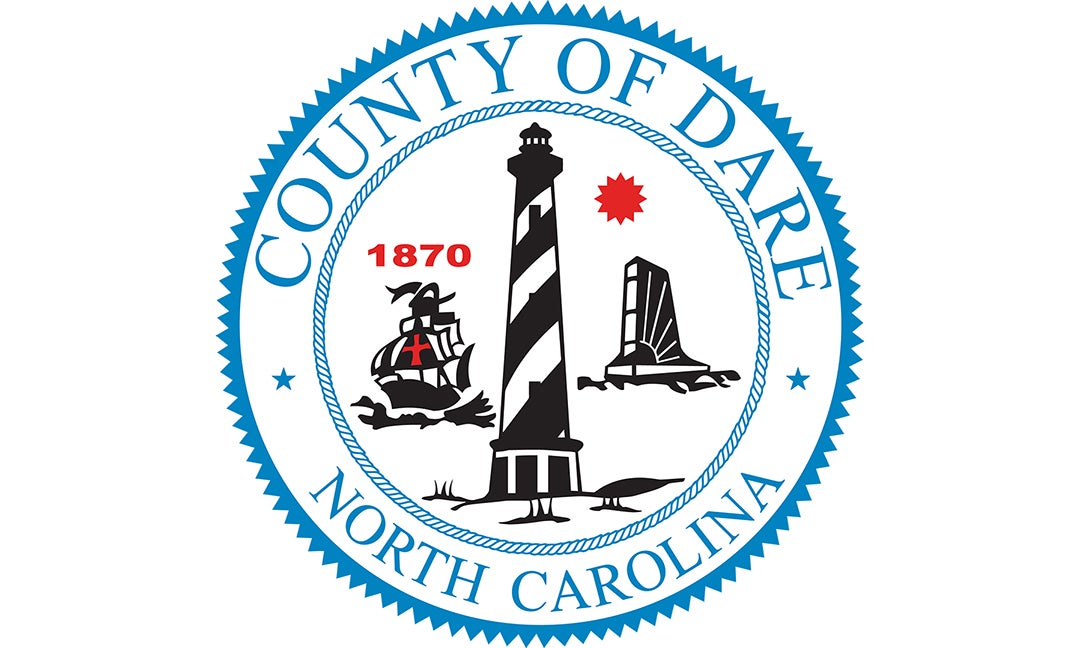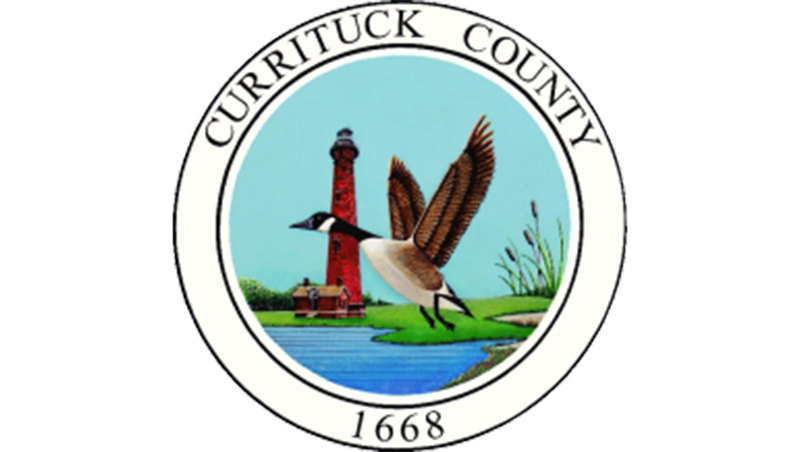Cape Hatteras National Seashore presentation details Buxton Beach Access petroleum contamination, remnant infrastructure
Published 9:18 am Monday, April 1, 2024
|
Getting your Trinity Audio player ready...
|
Close to 100 people showed up to hear Cape Hatteras National Seashore Superintendent David Hallac report on Buxton Beach Access petroleum contamination and remnant infrastructure now showing up due to beach erosion.
The meeting was held in the Fessenden Center gymnasium in Buxton. The tiered seats were almost full and additional chairs were brought in for more seating.
Hallac stood alone before the crowd to present a slide show and answer questions. He started in on the history of the Buxton Beach Access site, which is necessary background.
But he was interrupted by a man who said he didn’t need to know the history. He’s read about it. “Just tell me what you plan to do.” After some grumbling, he told Hallac to “go ahead.”
The players in this incident are the National Park Service, which manages the land, and the U.S. Army Corps of Engineers, which is responsible for remediation of Formerly Used Defense Sites; The U.S. Coast Guard Sector North Carolina for pollution events and the U.S. Coast Guard Engineering Unit in Cleveland, which manages Coast Guard infrastructure, are also involved.
From 1956 to 1982, the U.S. Navy was permitted to use the land as an undersea surveillance station. Erosion is now unearthing the vaults for cable that go into the Atlantic Ocean and the foundation of an adjacent building, called the “Driftwood Club.”
The U.S. Coast Guard used the Buxton Beach Access as a base from 1984 to 2010, when it decommissioned the site.
Both the U.S. Navy, under its permit, and the U.S. Coast Guard, under a memorandum of understanding and then a general agreement, were obligated the restore the land for use by the National Park Service. The Navy left the buildings. The Coast Guard did not plan to use several. A contractor was hired by the U.S. Army Corps of Engineers to remove those unwanted buildings. However, on Wednesday, the rectangular foundation of the club was revealed on the beach.
In 1998, the Army Corps of Engineers (Corps) approved the Buxton Beach Access as a Formerly Used Defense Site (FUDS) and began acting in response to petroleum contamination in several areas.
Some remediation was done. Between 2000 and 2005, 4,006 tons of contaminated soil was removed. The site’s groundwater is monitored annually for the presence of petroleum products. Hallac on Wednesday said a chemical is injected into temporary wells to break up petroleum. Testing is showing a reduction in readings.
When the Coast Guard pulled out in 2010, a soil assessment was completed, showing the presence of metals, pesticides and PCB compounds present in soil at concentrations above EPA standards.
Today, a three-tenths of a mile of Buxton Beach is closed. The Dare County Department of Health and Human Services along with the National Park Service and the state’s Public Health Division have issued a precautionary public health notice advising visitors to avoid swimming, wading and fishing in this area.
At the end of the slide show, somebody said “I’m a little angry.”
Hallac responded, “We’re pretty frustrated as well.”
A surfer said, “we’ve been smelling it for years.”
Hallac said that Kevin McCabe was the first to call him. The date was Sept. 1, 2023.
Hallac said “the Corps has not responded at this time.”
Interestingly, on the very day of the meeting, the U.S. Army Corps of Engineers sent a media release to The Island Free Press at 5 p.m., one hour before the meeting was to start. The media release was not sent to Cape Hatteras National Seashore.
The Corps media release summarizes its Buxton site visits from September 2023 through February 2024.
In the second paragraph, the Corps recommends to study what storm, tide and wave conditions lead to organic material on the beach. “Developing a predictive model, in as much as one can be developed, would allow USACE to be proactive and have a team in place, to not only verify conditions, but to try to find a source.”
A paragraph toward the end of the release seems to state the position of the U.S. Army Corps of Engineers, stating “… remedial action using the FUDS Program is not authorized due to an unknown source [of petroleum]. Additionally, the concrete structures that were uncovered after years of erosion on the beach were not associated with the petroleum or the initial cleanup of the area that occurred in the 1990s, which also means those remnants are currently ineligible for removal under the FUDS Program.”
The National Response Center is taking calls. Every day, Cape Hatteras National Seashore Chief Ranger Mike Henry calls with what has been observed and smelled on the Buxton Beach, said Hallac.
Trip Forman graciously thanked Hallac for the meeting. He said the situation is “an opportunity to revisit putting the jetties back in.”
A person reported a renter has canceled a reservation. Hallac said he was sorry that was happening.
Said another person said, “we don’t need to do more studying. We need to come up with an action plan.”
Perhaps this is where the community is moving. The consensus of the folks gathered seemed to be to get serious about emailing elected officials and those in charge of various agencies.
John Couch, of the Outer Banks Preservation Association, said “we formed a group. Got something done. Get organized!”
Dare County commissioner Ervin Bateman was at the meeting. He reported that Dare County Board of Commissioners Chairman Bob Woodard, Vice Chairman Wally Overman and commissioner Danny Couch, as well as county manager/attorney Bobby Outten, traveled to Washington, D.C. this past week to meet with staff members from the offices of U.S. Senator Thom Tillis and U.S. Senator Ted Budd about the Buxton Beach Access.
Bateman said “we need to act. It needs to be you calling.”
SUBSCRIBE TO THE COASTLAND TIMES TODAY!


